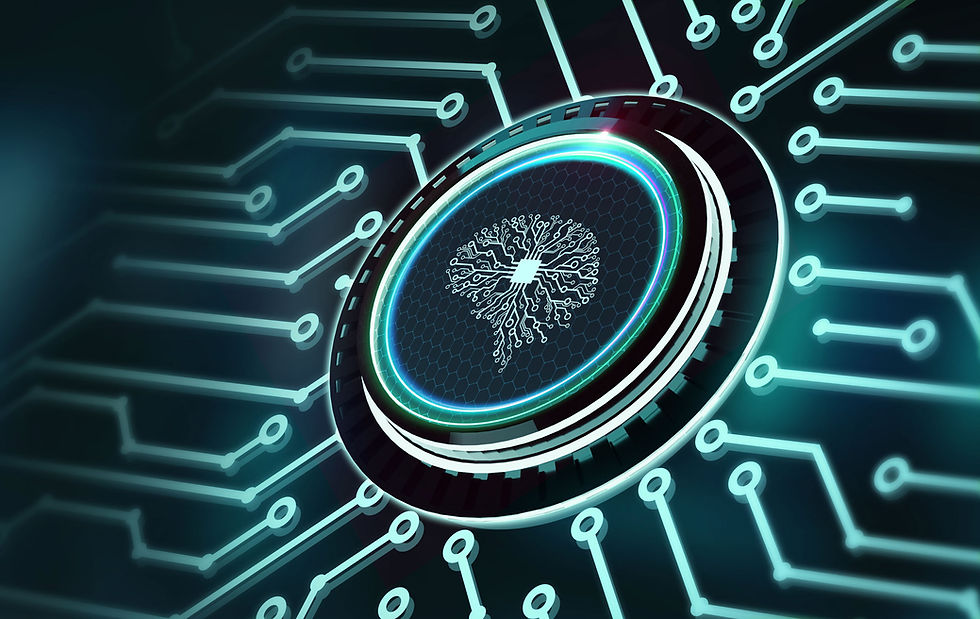THE DUAL FACES OF GENERATIVE AI: INNOVATION AND DATA SECURITY
- Stuart Golding

- Nov 20, 2023
- 3 min read

Generative AI, while being a marvel of modern technology, carries with it the weight of significant security concerns. This form of AI, primarily known for creating content like images, text, and audio, holds potential that's as vast as the digital universe itself. But like every universe, it's not devoid of black holes, and in the realm of generative AI, these black holes pertain to data security.
Understanding Generative AI Imagine if the tech world had its own Mozart or Shakespeare. That's what generative AI feels like. It’s powered by incredibly advanced algorithms that allow it to whip up content so authentic, you'd bet it's human-made. From poems that tug at the heartstrings to images so lifelike you'd want to touch them, this AI has it all covered.
Yet, it's not just about the creativity or the speed, which, by the way, is something we humans can't keep up with. It's also about the implications. Think of generative AI as a supercharged car. In the right hands, it can be a thrilling, exhilarating ride. But in the wrong hands? It could lead to accidents, or in the AI's case, misinformation, identity theft, or a host of other digital mishaps.
And that's the crux. With great power doesn't just come great responsibility; it also brings with it the risk of misuse. As we continue to embrace generative AI in various sectors, from entertainment to security, it's crucial to remember the dual nature of this tech tool. It's a game-changer, no doubt. But we need to play the game wisely to ensure that its immense potential is harnessed in the right manner.

The Security Risks With power comes responsibility, and in the wrong hands, the power of generative AI can be weaponised. The chief concerns are:
Fabrication of Content: Fake images, doctored audio, or misleading text can be generated, leading to misinformation campaigns or identity theft.
Bypassing Security Protocols: Generative AI can be trained to mimic patterns and hence can trick certain security systems, leading to breaches.
Exploiting Vulnerabilities: As AI becomes more integrated into systems, there's a growing fear that generative AI might exploit system vulnerabilities in ways traditional hackers haven't even thought of.
Safeguarding Against the Threats To harness the advantages of generative AI while keeping the risks at bay, organisations should:
Stay Informed: Awareness of the latest developments in generative AI is paramount. Know the potential threat vectors that can be exploited.
Adopt AI Detection Tools: Use AI to detect AI-generated content. Several modern tools are designed to spot the subtle patterns in AI-generated data that humans might miss.
Regular Audits: Keep security measures updated. With the tech landscape evolving, outdated security protocols can be easy targets.
Training and Education: Ensure the workforce understands the nuances of generative AI. A well- informed team can be the first line of defence against potential threats.

The Two Faces of Generative AI Generative AI is often compared to a double-edged sword, and for good reason. Dive into one side, and you'll witness a realm where boundaries are continuously stretched, and the old rules of tech no longer apply. It's revolutionising industries, bringing a fresh wave of creativity and innovation. This kind of AI doesn't just play the game; it's rewriting the rulebook.
However, flip the coin, and a more cautionary tale emerges. Along with the ground-breaking capabilities comes a bundle of security concerns that can't be ignored. From creating deepfakes that are eerily realistic to crafting content that can mislead or misinform, generative AI is a tool that, in the wrong hands, can have unintended consequences.
Organisations eager to leverage this new tech frontier must tread with vigilance. It's not just about hopping aboard the generative AI express; it's about understanding the landscape, the pitfalls, and the sharp turns. They need a mix of enthusiasm and caution, constantly educating themselves about the evolving challenges and being flexible enough to adapt on the fly.
The allure of generative AI is undeniable. Visions of a future brimming with endless possibilities beckon, where creations by AI are intertwined seamlessly with human endeavours. But, like a child with a new toy, there's a temptation to dive in headfirst without gauging the depth of the waters. It's crucial to strike a balance. Embrace the wonders of generative AI, by all means, but also respect its power.
Only by combining foresight with responsibility can we ensure that our journey with generative AI is both transformative and secure.




Comments